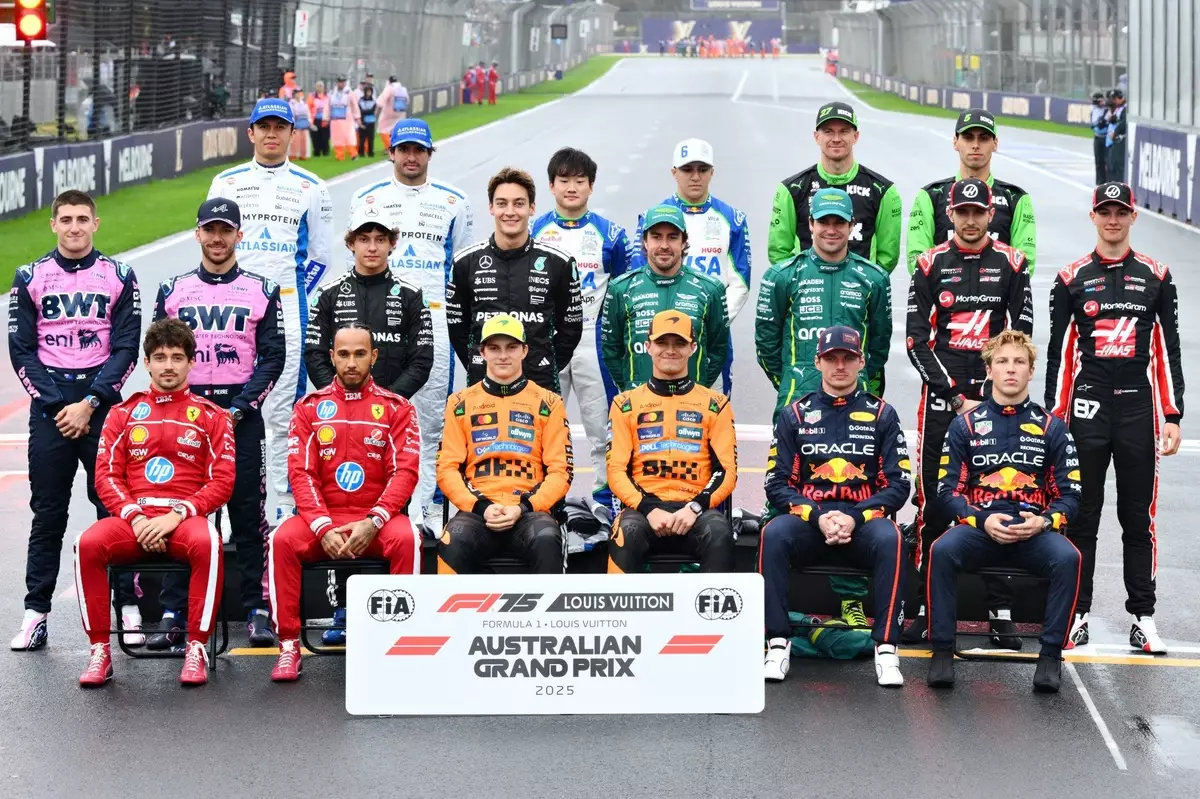In the high-octane world of Formula 1, few topics generate as much buzz as driver contracts and team line-up changes. The current chatter surrounding Max Verstappen exemplifies this phenomenon, with whispers suggesting that the reigning champion’s seemingly ironclad deal with Red Bull might not be as secure as it appears. While his contract extends to 2028, the presence of performance-based break clauses introduces a tantalizing possibility: Verstappen might seek pastures new if his performance under current terms is deemed insufficient.
This potential exit isn’t just idle speculation; it represents a seismic shift that could reshape F1’s landscape. Despite Verstappen’s outstanding performances this season, the political, technical, and managerial upheavals within Red Bull—most notably, Christian Horner’s departure and the untested Ford-backed power unit—cast shadows over his future. The Dutchman’s status as the undisputed number-one driver at Red Bull makes his loyalty and choices all the more consequential. Should he wish to transition, Mercedes, long a fan of Verstappen’s talent, stands poised to make their move, especially if they believe he aligns with their long-term strategic ambitions.
Equally intriguing is the question of who might take Verstappen’s vacated seat. The current second driver, Yuki Tsunoda, faces an uncertain future after an inconsistent 2026 campaign. Meanwhile, Isack Hadjar’s impressive performances with the sister team might give him a shot at progressing, but that path isn’t guaranteed. The Red Bull seat’s vacancy could serve as a catalyst for a ripple effect across the grid, influencing driver decisions in unexpected ways.
George Russell’s Dilemma: To Extend or to Explore?
Close on Verstappen’s heels is George Russell, whose contract with Mercedes is set to expire at the season’s conclusion. The Briton’s ongoing negotiations and future prospects are heavily intertwined with the Verstappen saga. If Verstappen leaves Red Bull, the logical assumption is that Russell might be eyeing a move to fill that seat, especially given his current contract concerns and the rivalry that has subtly simmered beneath the surface.
Despite their differences, Toto Wolff’s admiration for Verstappen is well known, and the Mercedes boss might see an opportunity to bring in the Dutchman, which could influence Russell’s own plans. The pressure is mounting for Russell to secure a future at Mercedes, but uncertainty persists. Will Wolff prioritize loyalty and current drivers, or will he attempt to lure Verstappen and reshape the team’s future?
In tandem, Mercedes faces its own internal questions. Kimi Antonelli, a promising rookie, is nearing the end of his contract. His recent struggles and potential to invoke a buyout clause open the door for the team to make strategic decisions about their driver lineup. Balancing emerging talent with seasoned experience will be key in shaping Mercedes’ trajectory for 2026.
Emerging Teams and New Entrants: The Quest for Fresh Talent
The landscape of F1 isn’t just about the established giants; new teams like Cadillac are entering the scene with ambitions of disrupting the traditional order. With substantial financial backing and the backing of General Motors, Cadillac’s upcoming entry as the 11th team promises a fresh set of opportunities—and challenges—for driver selection.
While the roster isn’t set in stone, rumors abound that Sergio Pérez, with his wealth of experience, is a prime candidate to pilot Cadillac’s debut car. His established reputation and racing acumen make him an appealing choice for a team looking to make an immediate impact. Valtteri Bottas, currently at Mercedes, is another experienced option that could transition into this new frontier. Moreover, young talents such as Mick Schumacher, Zhou Guanyu, and American prodigy Jak Crawford are watching developments intensely, hoping for opportunities that could elevate their careers into the F1 spotlight.
The entry of Cadillac doesn’t just threaten to shake up driver loyalty; it introduces strategic complexity to the driver market, forcing established teams and drivers alike to reevaluate their futures. The competition for seats will intensify, and the decisions made in the coming months could determine the power dynamics of F1’s grid for the next decade.
Strategic Grid Manipulation or Genuine Talent Showcase?
What makes this “silly season” particularly intriguing is the delicate interplay between strategic maneuvering and authentic talent development. Some teams might view driver moves as purely strategic—tactical plays designed to optimize performance or secure commercial interests. Others genuinely seek to cultivate the next generation of stars. This duality fuels the drama, and the outcome will hinge on not just speed, but on geopolitical, financial, and managerial decisions.
The decisions made now aren’t isolated; they are part of a broader chess game that involves contractual negotiations, technical regulations, sponsorship interests, and team ambitions. The uncertainty surrounding Red Bull’s technical evolution, the stability of Mercedes’ driver lineup, and the emergence of new teams make the 2026 grid a narrative that is yet to be fully written. Every move will ripple across the paddock, with old rivalries and new alliances shaping the sport’s future landscape.
In essence, the 2026 F1 driver lineup debate transcends mere contract signings; it embodies the sport’s relentless pursuit of excellence, prestige, and innovation. As the season progresses, the true winners will be those who can adapt, anticipate, and position themselves at the right moment—because in Formula 1, staying still is never an option.


Leave a Reply